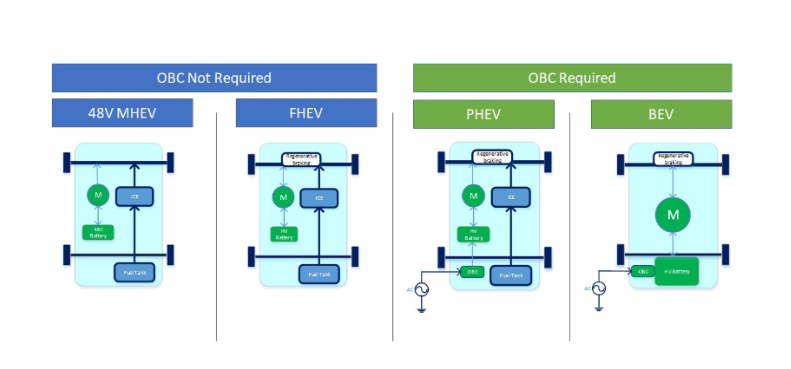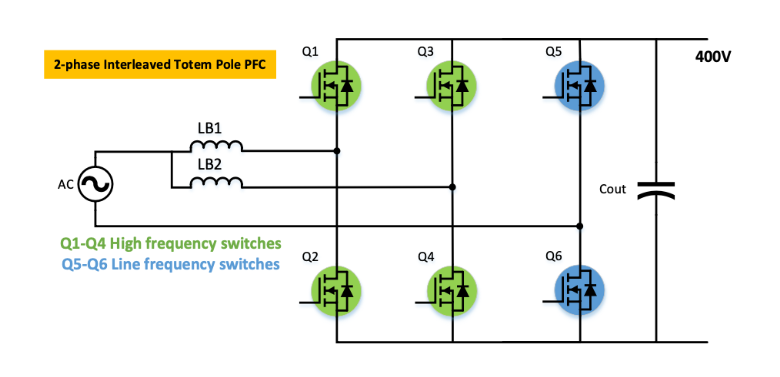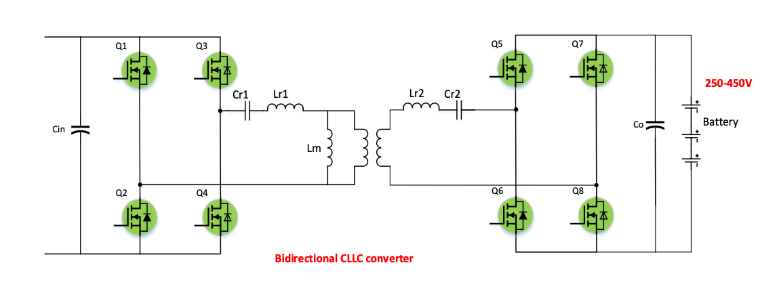
Although "range anxiety" has always existed, various forms of electric vehicles (EVs), such as hybrid and pure electric, are being accepted by more and more people. Automakers continue to work to improve EV driving range and reduce charging times to overcome this important barrier to adoption. The ease of use and convenience of electric vehicles is significantly affected by the way they are charged. Due to the limited number of high-power charging stations, a significant number of car owners still need to rely on on-board chargers (OBCs) to charge their electric vehicles. To improve the performance of on-board chargers, automakers are exploring new technologies such as carbonization (SiC). This technical article will explore the importance of in-car chargers and how advances in semiconductor switching technology are pushing the performance of in-car chargers to a whole new level.
There are a variety of vehicles on the market today that use different propulsion systems, including vehicles powered only by internal combustion engines (ICE), hybrid vehicles (XHEVs) that use a combination of internal combustion engines and electric systems, and pure electric vehicles (XEVs). xHEV consists of two different types of vehicles, namely mild hybrid electric vehicle (MHEV) and full hybrid electric vehicle (FHEV).
The MHEV relies primarily on an internal combustion engine while integrating a small battery (typically 48V). However, the MHEV cannot run on electricity alone, and the electric motor is designed to help modestly reduce fuel consumption.
In contrast, the FHEV offers greater flexibility because it seamlessly combines an internal combustion engine and an electric motor, where the motor is powered by a battery (typically operating voltage range of (100-300V)). FHEV can also use braking energy recovery technology to charge the battery, using the energy captured during braking to improve efficiency.
All XEVs, including plug-in hybrid electric vehicles and pure battery electric vehicles (BEVs), are equipped with regenerative braking systems. However, due to their large battery capacity, these cars rely heavily on on-board chargers for charging.
Figure 1: A wide variety of electric vehicles exist today, including MHEV, FHEV, PHEV, and BEV

The easiest way to charge an electric car is almost by connecting the on-board charger to a wall outlet via cable (usually requires ground fault protection). Although this way of charging is very convenient, However, most residential Level 1 systems (or SAEAC Level 1 as defined in the J1772 standard) operate at about 1.2kW and only add 5 miles of mileage for an hour of charging [estimated mileage for an hour of charging is based on a vehicle's energy consumption of 0.21 kWh/ mile or 13 kWh/100 km]. . Level 2 systems (or SAE AC Level 2) typically use multiphase AC power from the grid and are most commonly found in public buildings and commercial facilities. The power is up to 22 kW, and the electric-hour can increase the range by 90 miles.
Both level 1 and level 2 chargers provide AC power to electric vehicles, so the on-board charger is the key to converting AC input to DC output to charge the battery. At present, most chargers deployed in the market are level 2 chargers.
High-power DC charging piles, often referred to as Level 3, SAE Level 1 and 2 DC charging piles, or IEC Mode 4 appliances, output DC voltage and can directly charge the battery without the need for an on-board charger. These DC charging piles range in power from 50 kW to over 350 kW and can be charged to 80% of battery capacity in about 15-20 minutes. Given the high power levels and the need to retrofit grid infrastructure, the number of fast charging stations is still relatively limited, although it is increasing rapidly.
Many car manufacturers are currently switching from 400V batteries to 800V batteries. This shift is designed to extend the range of electric vehicles by improving system efficiency, boosting performance, speeding up charging and reducing cable and battery weight.
Car charger analysis
The on-board charger is usually a two-stage power converter, consisting of a mains correction stage (PFC) and an isolated DC-DC converter stage. It is important to note that while non-isolated configurations are feasible, they are rarely used. The power factor correction stage rectified the AC supply, keeping the power factor above 0.9, and generated a regulated bus voltage for the DC-DC stage.
The demand for two-way systems has increased significantly over the past few years. Two-way systems allow electric vehicles to provide a reverse power flow from the battery to the power supply to support a variety of uses
Routes such as dynamically balancing grid loads (V2G: vehicle-to-grid) or managing grid outages (V2L: vehicle-to-load).
Traditional power factor correction methods involve the use of a diode rectifier bridge combined with a boost converter. The rectifier bridge converts AC voltage to DC voltage, and the boost converter
Responsible for raising the voltage. An enhanced version of this basic circuit uses an interleaved boost topology by paralleling multiple converter stages in order to reduce ripple current and increase efficiency. These power factor correction topologies typically employ silicon technologies such as hyperjunction MOSFETs and low Vf diodes.
With the advent of wide band gap (WBG) power switches, especially SiC power switches, new design methods have been realized. This type of power switch has the advantages of low switching loss, low RDS(on) and low reverse recovery diode diode.
In medium to high power power factor correction applications (typically 6.6kW and above), bridge-less totem pole topologies are becoming more and more popular. As shown in Figure 2, in this topology, the slow bridge arm (Q5-Q6) switches at the grid frequency (50-60 Hz), while the fast bridge arm (Q1-Q4) performs current shaping and voltage boosting, and operates at a higher frequency (typically 65-110 kHz) in hard switching mode. Although the bridge-less totem pole topology dramatically increases efficiency and reduces the number of power elements, it increases the complexity in terms of control.
Figure 2: Bridgeless totem pole topology

The DC-DC stage usually adopts an isolated topology, using a transformer to provide isolation, and the main purpose is to adjust the output voltage according to the charging state of the battery. Although half Bridges can be used topology, but currently mainly use dual active bridge (DAB) converter schemes, such as resonant converter (such as LLC, CLLC) or phase-shifted full bridge (PSFB) converter. Recently, resonant converters, particularly LLC and CLLC, have received a lot of attention for their advantages, including wide soft-switch operating ranges, bidirectional operating capabilities, and the ease of integrating resonant inductors and transformers into a single power transformer.
Figure 3: Two-way DC-DC allows power to be returned to the grid during peak usage periods

SiC in car charger applications
For 400 V battery packs, SiC 650V devices are usually preferred. However, for the 800V structure, due to the higher voltage requirements, a device with a voltage rating of 1200 V is required.
The reason for the adoption of SiC in the field of automotive chargers is its outstanding performance in various factors of quality (FOM). SiC offers advantages in specific RDS(on) per unit area, switching losses, reverse recovery diodes and breakdown voltages. These advantages allow SIC-based solutions to operate reliably at higher temperatures. These outstanding performance features enable more efficient and lightweight designs. As a result, the system can achieve higher power levels (up to 22 kW) that are difficult to achieve using traditional silicon-based solutions such as IGBT or superjunction.
Although the use of higher power on-board chargers for electric vehicles may not directly affect the range of the car, it can significantly reduce the charging time and help solve the battery life
The anxiety problem. In order to achieve faster charging speed, the power of the car charger is constantly increasing. SiC technology plays a vital role in making these systems more efficient, ensuring efficient conversion of grid power and avoiding energy waste. The technology makes it possible to design more compact, lightweight and reliable on-board charger systems.
About US
Heisener Electronic is a famous international One Stop Purchasing Service Provider of Electronic Components. Based on the concept of Customer-orientation and Innovation, a good process control system, professional management team, advanced inventory management technology, we can provide one-stop electronic component supporting services that Heisener is the preferred partner for all the enterprises and research institutions.
